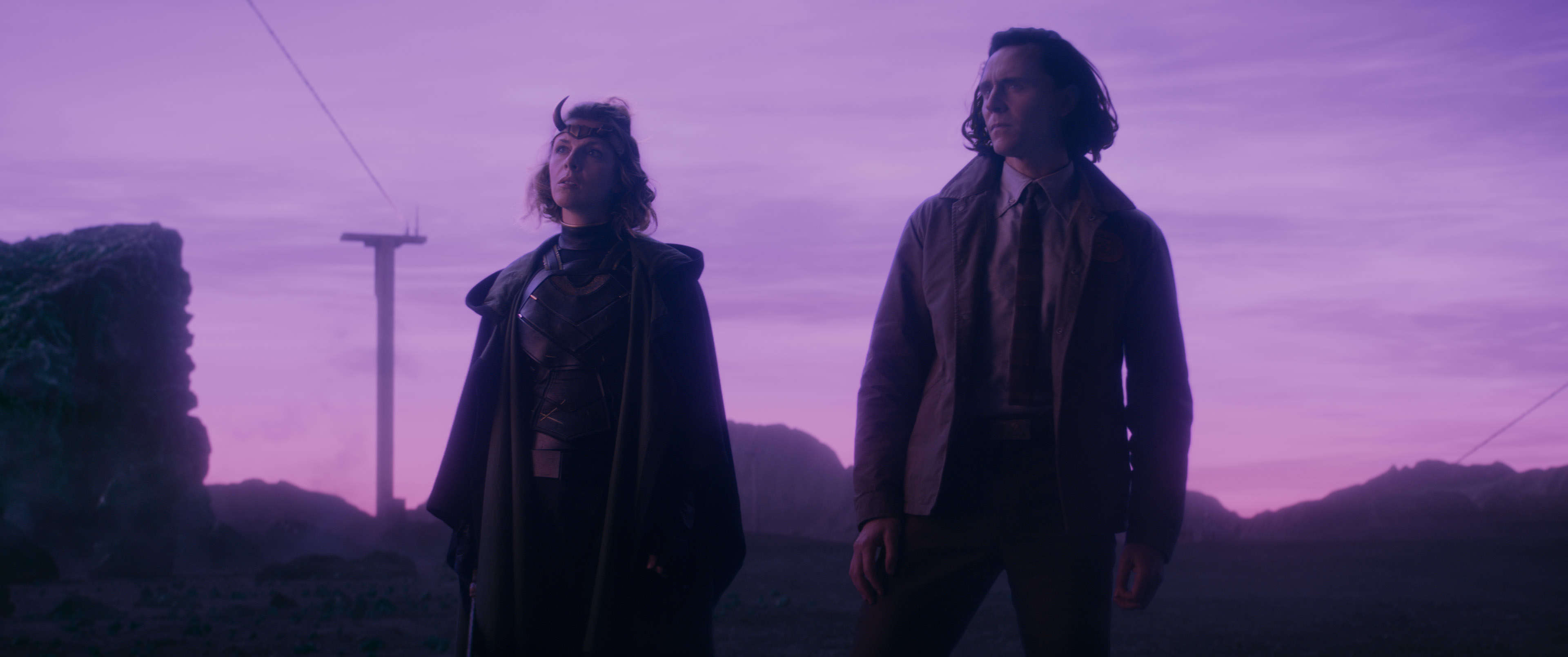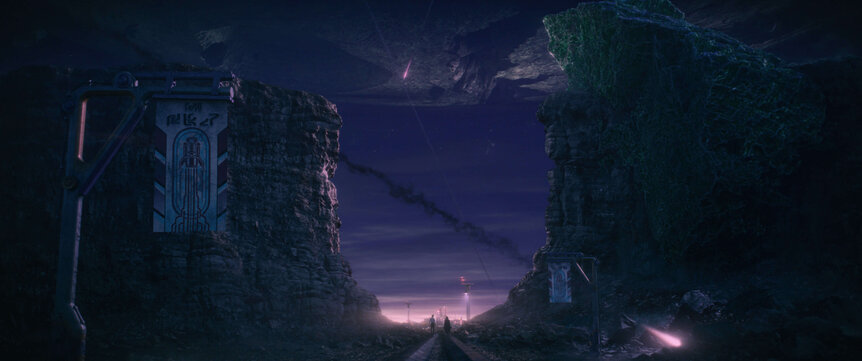Create a free profile to get unlimited access to exclusive videos, sweepstakes, and more!
Would Lamentis-1 have flattened Loki? The Science Behind the Fiction

If you’re going to choose an apocalypse within which to hide from the Time Variance Authority, try to choose one not in the midst of a planetary collision. That might not be the primary lesson from Loki’s third episode, but it’s certainly an important one. Lamentis-1 provides a visually arresting setting for the events of the episode to play out in, but the reality of standing on the surface of a moon during an imminent collision would be pretty different and a whole lot more harrowing.
And all of it comes down to gravity.
TIDAL FORCES
While Loki and Sylvie are desperately trying to find a way off of Lamentis-1, the sky is filled with the imposing view of its parent planet bearing down. Bits of celestial rubble constantly pierce the atmosphere, pummeling the moon’s surface in a barrage of planetary buckshot. Other than that, however, the moon seems to be holding up pretty nicely. At least some of the residents are sitting in their homes, calmly waiting to be smooshed.
In reality, the situation on the surface would be pretty violent and the cutoff for leaving would have happened long before the planet descended low enough to crush buildings.
On the surface of the Earth, we almost never think about the gravitational impact of the moon. It is much smaller than the Earth and pretty far away. While the moon’s gravity does pull on you, it’s such a small fraction of the total gravity you feel (something like 0.0003 percent) as to be imperceptible. But that doesn’t mean it’s unimportant.
The force of the moon’s gravity shifts as Earth rotates and as it orbits the planet. This shifting pressure causes the tides and contributes a certain amount of heat energy to the planet by way of geological friction. If the moon were much nearer, the effect of its gravity would be felt more strongly. The tidal forces would cause incredible shifts in the world’s oceans, causing sky-high waves and pretty quickly making the surface at least hugely inconvenient to live upon.
Those same tidal forces would heat up the interior of the planet causing increased volcanic activity and earthquakes.
We need only look to Io, one of Jupiter’s moons, for proof. The gravitational situation on Io is complex, owing to the pure size of the parent planet as well as the other 78 moons. Each of these objects is interacting gravitationally and Io is pushed and pulled constantly. These forces deliver a lot of frictional heat resulting in staggering volcanic activity.
Io’s most consistently active volcanic area — observations have confirmed its continued activity since at least March 1979 when Voyager 1 passed by — is appropriately named Loki Patera, a regularly erupting lava lake 126 miles (202 kilometers) in diameter.
Io is a violent place filled with environmental extremes owing entirely to gravitational pressures. In short, if you didn’t get off the surface of Lamentis-1, you’d wish you had long before the planet actually made contact.
BETWEEN A ROCK AND A BIGGER ROCK
One of the more stunning set pieces in the episode is the image of Lamentis-1’s parent planet hovering in the sky, cracked and continuing to come apart. This is one of the more realistic elements of the setting. The gravity between two objects of that size, interacting so closely would be catastrophic. But they got it backward.
That two bodies in space orbit one another at all means they have a gravitational relationship. The planet and the moon each have their own gravity, and the apparent effect of that gravity depends on the mass of the objects and their distance from one another.
The general wisdom is that moons orbit planets. Rather, smaller objects orbit larger ones. And that’s true, for the most part. More accurately, any two objects orbit a center of gravity, it’s just that the center of gravity is often inside the larger of the two objects.

In the simplest terms, anyone standing on the surface of a moon would feel the gravity of that moon most strongly, but they would also be pulled upon by the parent planet.
Under ordinary circumstances, this doesn’t have much of an impact on any people living on the surface. But if a planet and moon began getting closer to one another, things would change. Because the effects of gravity are determined both by mass and proximity, the nearer the parent planet got to Lamentis-1, the more it would pull on the moon and everyone on its surface.
Depending on the planet’s size and proximity, it’s possible that its gravity would begin to overwhelm that of the moon. Anyone on the surface would feel themselves getting lighter and lighter until eventually, they fell up, into the sky, toward the encroaching planet. That is, of course, if the moon held together at all. Which is unlikely.
It’s the moon's internal gravity that holds it together as a single object, rather than a collection of gravitationally attracted but distinct objects. As the planet and moon move nearer to one another, the side of the moon closer to the planet would be pulled upon by the planet’s gravity more strongly than the far side.
For a while, the moon’s internal gravity will outweigh external forces but there is a threshold beyond which that’s no longer true. That threshold is known as the Roche limit.
The Roche limit is the point at which tidal forces overcome the internal gravity holding a body together. In short, as the planet approaches Lamentis-1, there comes a point when the gravity of the planet would rip the moon apart. Not the other way around.
Pieces of the moon would then spread out creating a ring around the planet, not unlike the rings of Saturn. In fact, it’s believed this happened on Earth once before. When the solar system was young, a Mars-sized object is believed to have collided with Earth. The leftover material coalesced into the Moon. Moreover, there’s some evidence that the moon will collide with the Earth in the distant future.
When that happens, it will be a bad place for trickster gods, or anyone else, to hang out.



























